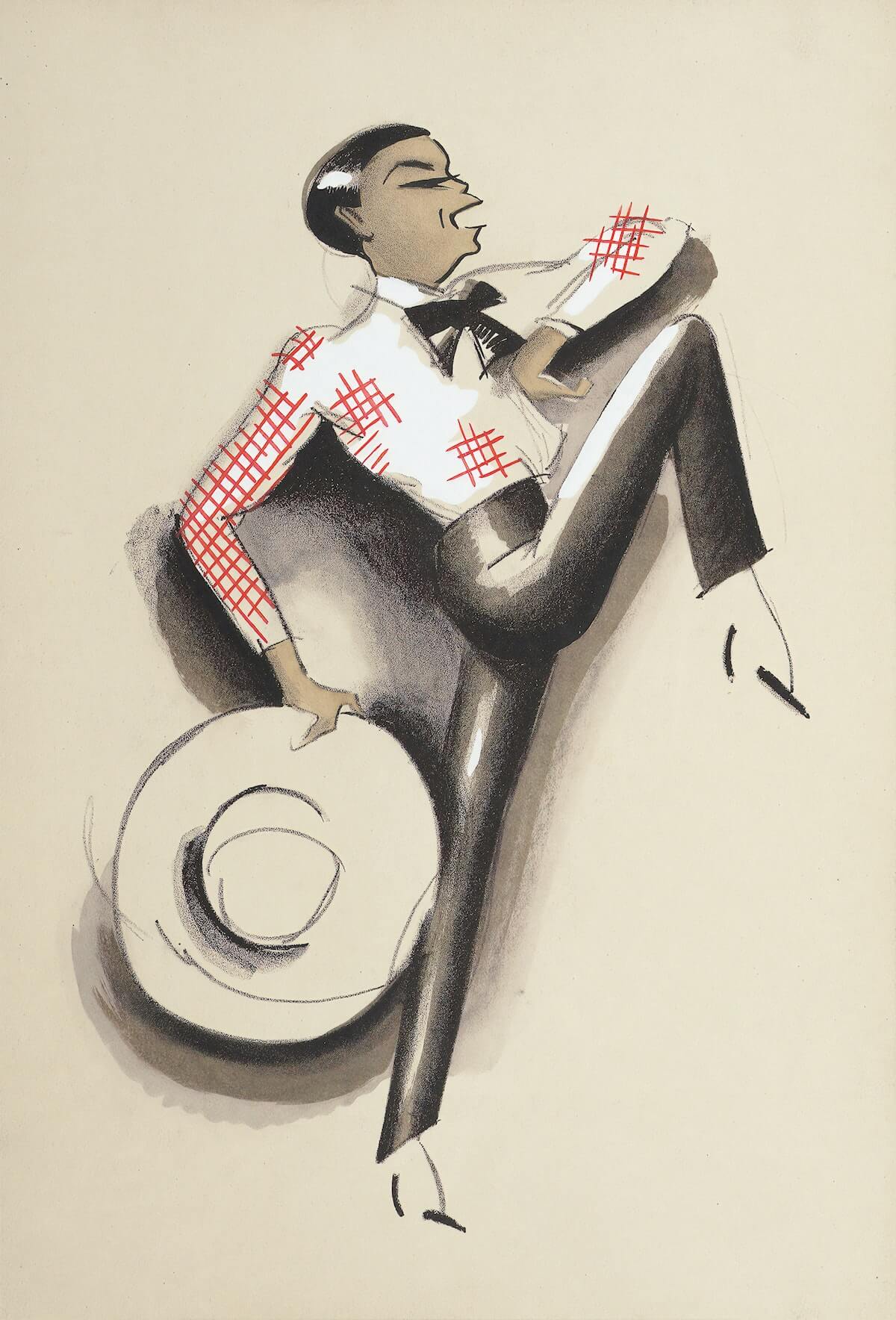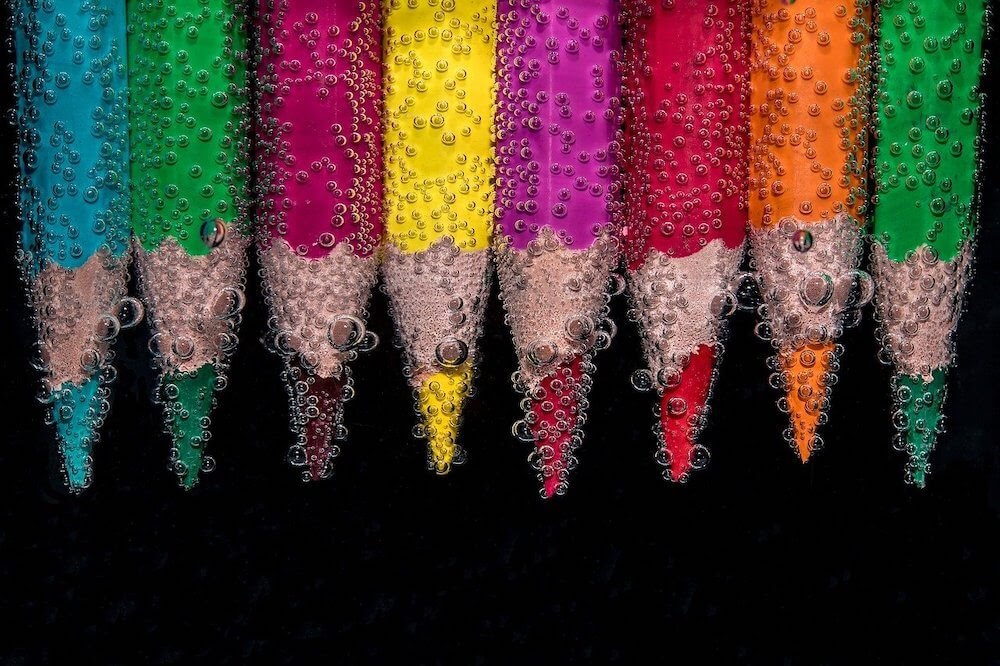While some people can’t focus until they have meandered around for hours and finally give in to guilt, others sit and get amazing work done by just holding the pen right: having a daily creative routine could be complicated or could come simple and natural.
What does a creative schedule even mean? A schedule that inspires creativity and helps the creators (writers, painters, entrepreneurs, designers, artists, and other creative professionals) forge their imaginations most desirably.
Also, creativity is subjective. A coder is creative when she can write a 100-line code in 10. A marketeer is creative when he can sell toothpaste such as Pepsodent to the human race.
Anyone with original ideas (in or out of their work sphere) is creative.
Everyone has their idiosyncratic creative schedule. The popular blogger Maria Popova reads while working out. Never Ending Footsteps’ Lauren is writing profusely in the sun in the pandemic times. Jodi from the blog Legal Nomads tries different tactics to get any amount of work done while battling health issues. My partner wakes up at 5 to work on his passion project, and I don’t write before I have run at least three miles or have meditated for a bit.
After poring over a lot of biographies, blogs, and books of and by some of the most creative people on our sweet planet and deducing from my creative living, I have easily concluded that a system is essential to the manifestation of artistic ideas(or of any ideas for that matter).
Books such as The Power of Habits, Ruskin Bond’s ideas, Thinking Fast and Slow, The 80–20 Principle, The One Thing, The Art of Learning, The Slight Edge, Bird by Bird, On Writing, Benjamin Franklin’s autobiography, and blogs by James Clear, Darius Foroux, BJ Fogg(Tiny Habits), Leo Babauta (Zen Habits), Zat Rana — all illustrate the power of practicing creative rituals and maintaining effective schedules to live creatively.
The scientific insights provided by the books are no less than a goldmine. But how do the routines of all these people help you or me? While we cannot copy and paste someone else’s daily rituals on the map of our day and call them ours, we can take inspiration.
I am not following anyone’s routine, but my schedule is a conglomeration of tips and tricks from people and experts from around the world. Starting with a morning trigger routine, as suggested by Josh in his book The Art of Learning, to reading before bed, as recommended by almost everyone — I took ideas, experimented with them, stuck with the effective ones, and let go of the unpromising ones.
Using the lessons, not only I have been able to form my creative process, but I have soaked in the strength to stay on it and see the process to the end no matter how long it takes me to create something desirable.
(You can read about my practical ideas on working from home productively, creating a work schedule, healthy habits to follow daily, and 30 handy work from home tips if you want to learn more about each topic.)

Let me talk about the aesthetics of a creative schedule and how one can inspire herself to keep creating in a bit more detail.
The below lessons are inspired by the book Manage Your Day to Day: Build Your Routine, Find Your Focus, and Sharpen Your Creative Mind (by 99U, an initiative by the Adobe social media platform for creatives called Behance). I am only sharing the most impressive ideas that have worked for me, too.
As Scott Belsky, Founder of Behance and the author of Making Ideas Happen, says in the introduction of the book,
“It’s time to stop blaming our surroundings and start taking responsibility. While no workplace is perfect, it turns out that our gravest challenges are a lot more primal and personal. Our individual practices ultimately determine what we do and how well we do it. Specifically, it’s our routine (or lack thereof), our capacity to work proactively rather than reactively, and our ability to systematically optimize our work habits over time that determine our ability to make ideas happen.”
Let’s be responsible now.
How to Set Up an Effective Creative Routine
Place your ambitions higher than the world’s expectations
Mark Mcguinness (the author of Resilience: Facing Down Rejection and Criticism on the Road to Success, and a columnist for 99U) sets the right tone for creatives in the first chapter of the book by saying, “If you want to create something worthwhile with your life, you need to draw a line between the world’s demands and your own ambitions.”
Marc goes on to explain how urgent-seeming work, like replying to emails and messages, etc, takes all our time and suggests, “The single most important change you can make in your working habits is to switch to creative work first, reactive work second. This means blocking off a large chunk of time every day for creative work on your own priorities, with the phone and e-mail off.”
When I wrote in the morning with my email and phone switched off two years ago, I upset many people, including my parents, by not attending their calls or replying to Whatsapp messages instantly. Concomitantly, my friends don’t message me in the morning, and some stopped messaging at all as I took hours and, sometimes, even days, to reply to them.
I shifted all freelance calls to the evening and replied to non-urgent emails(which is 99.9 percent of all emails) post 3–4 or sometimes 5 pm. While my freelance clients weren’t upset, I know some of them would have been much happier to receive an instant reply.
Mark goes on to saying reassuringly, “But it’s better to disappoint a few people over small things, than to surrender your dreams for an empty inbox. Otherwise, you’re sacrificing your potential for the illusion of professionalism.”
Look, replying to an email or a message instantly was never the idea. Instant message is called so for it is sent by the sender and received by the receiver instantly, unlike postal mail. But it doesn’t have to be taken care of before a blink.
Would you rather not be doing the work that matters first, and which, in turn, has created the need for these communications? If not, either you are procrastinating or you don’t enjoy your work.
If you procrastinate using mundane tasks as an excuse, you can always shut down email, phone, and social media to focus on the important thing. But if you are disappointed with your work, you might have to bring a bigger change.
I have written much about why work should be fun and how to follow a passion, my journey from engineering to writing, and how to follow curiosity to build a career we love. Do read and see if you can relate.

Create a Creative Zone
When it comes to getting into the work zone, Marc says, “Stick to the same tools, the same surroundings, even the same background music, so that they become associative triggers for you to enter your creative zone.”
By simulating the same setting over and over, you can train your mind and body to get into a creative flow when you enter that environment.
Getting used to working in the same space doesn’t sound romantic to an artist, right?
Even though creative work might connotate lounging on an ethnic couch while dreaming about Bach, it is nothing like that most of the time. Watching the star-studded roof for hours could be the creative filler(and part of a good life) in between our sit-down deliberate work hours, but the stars won’t turn themselves into a new project or a prolific essay.
Those deliberate grinding hours would definitely turn into the most beautiful constellations ever. When you practice the same thing repeatedly, a fine powder of your truest essence pours over whatever you touch. Congratulations. You are now an alchemist of your destiny.
I can only create my best work when I am in a silent corner with a window into the world and not in fancy cafes, as one might think.
Lure your creativity closer by calling her play-friends at the right time — same room, same desk, a pen, tea, diary. And if you, too, sometimes go nomadic, as I do, then keep the signals mobile — I sit with a cup of tea, my Mac, and my phone in silent mode — this is pretty much what I need.
Sit down every day to do the same thing in the same place. And find yourself creating rather than getting bored with the space.
Let Mood Expire. (Practice as a daily ritual)
Pearl S.Buck said, I don’t wait for moods. You accomplish nothing if you do that. Your mind must know it has to get to work.
Mornings are my best writing time, but an unexpected logistical fallout at home or an inconvenient conversation with the husband in the morning can put me off even after a successful trigger routine(my run-shower-eat-tea+write routine which I have explained here).
Sometimes, I give in and let the situation take over. But, mostly, I plop into my chair and start typing or reading or marking down the things that I did the previous day and going over what I have to do today. Slowly my fingers dance, they may take a bit of time, but they dance as long as I am on the chair.
Seth Godin argues on similar lines — “The notion that I do my work here, now, like this, even when I do not feel like it, and especially when I do not feel like it, is very important. Because lots and lots of people are creative when they feel like it, but you are only going to become a professional if you do it when you don’t feel like it. And that emotional waiver is why this is your work and not your hobby.”
Now some people would debate that if you try to force yourself to work even on a bad day, your creativity would suffer. Your work would be unimpressive. But it is mostly the opposite. Today, I was uninspired but when I tried going through the rut, I finally picked up enough energy to create this piece.
In fact, creative works can turn out to be better when we feel emotional as long as we can channel those emotions into our art.
Let your mood expire. Don’t depend on it.
Let Frequency Take Over. And Forget About Creativity Blocks
Gretchen Rubin says, “Over the long run, the unglamorous habit of frequency fosters both productivity and creativity.”
If you can get yourself used to creating, you will create. Period.
Rubin further states that “frequency makes starting easier as it is hard to reenter a project after a break.” Also, if we work consistently, we play and frolic to give our best rather than worrying about if we have done enough.
A worry-less mind is the best mind.
Frequency also helps ideas surge and connect. While I was going through the challenge of writing 30 articles in 30 days, my mind constantly buzzed with title possibilities. One night I even dreamt about some new ideas, and the next day I was writing them. I was in a trance of creation, and those 30 articles are some of my favorite and well-read pieces to date, despite the limited time I took to create them.
Frequency nurtures frequency. Not only do you want to work more consistently if you work consistently, but you can also get something done even in small blocks of time as you don’t take time to gear up.
Don’t treat your creative project as a monolith. Show up frequently, and pick pebble by pebble.
Give into the Biological Rhythms rather than following a hard schedule or stretching yourself: Befriend sleep and appease willpower.
Tony Schwartz, the author and CEO of a consulting firm that focuses on the improvement of employee productivity, wrote.
“Even so, we’re all too willing to trade away an hour of sleep in the false belief that it will give us one more hour of productivity. In fact, even very small amounts of sleep deprivation take a significant toll on our cognitive capacity. The notion that some of us can perform adequately with very little sleep is largely a myth. Less than 2.5 percent of the population — that’s one in forty people — feels fully rested with less than seven to eight hours of sleep a night.”
Even when I am sleeping late and I have tonnes of work the next day, I never think about sleeping less. Because when I sleep fewer than 7–8 hours, I wake up exhausted, feel grumpy, and my brain does not cooperate for long when I try to think and write. So now I rest enough, mostly 6–7–8–9 hours, and fit in everything in the remaining time. Or I nap for half an hour post-lunch and find myself restarted.
Tony further emphasizes the ultradian rhythms, a smaller repeating cycle of circadian rhythms. “Ultradian rhythms are ninety-minute periods at the end of which we reach the limits of our capacity to work at the highest level.”
“Mostly we push ourselves by drinking coffee, eating chocolates, or just going at it in a sulking mode. And whenever we do that we override our physiological need for intermittent replenishment of energy.”
As established by the American psychotherapist Ernest Rossi, this 90-minute period could be 80 or 120, too, depending on the individual. [I would soon publish a piece on the ultradian rhythms using Rossi’s research or you can read his book The Twenty Minute Break which talks about our rest and activity body cycles.]
Summarizing Rossi’s idea, I can say that we can work at a good efficiency for 80-90-100 minutes, and then we need a break of 20(or a bit less or a bit more) minutes before we can stretch ourselves again.
These rhythms seem to define our willpower muscle, too, (read more about willpower in my guide to habits) which also gets exhausted when used enough. Replenishing ourselves is as important as putting ourselves to use.
Also, be mindful of your other kinds of circadian rhythms, such as menstrual cycles.
In the past, I used to drink coffee and sit on my chair even on my painful period days and wrapped myself in a heating belt or took strong medicine. But since I took a mindful Vipassana course where the meditators are taught to control their feelings and pains by focusing on their breath and being mindful of their reactions, I have started allowing my body to react. Now I sit in bed, drink chamomile tea, read until the pain dissipates, and then write. I don’t even need painkillers.
And if nothing works, I sleep for an hour and then feel much better.
Identify your daily rhythms, sleep well, take breaks suited to your personal needs, and don’t fret over break time. Creativity could just be the byproduct of following a natural course in life.
Be Alone, Frequently
Leo Babauta, founder of Zen Habits and author of the books Focus, The Power of Less, and The Effortless Life, says, “Even a small-time set aside for solitude each day — from twenty minutes to an hour — can make an enormous difference. This calming of the mind helps us to figure out what really matters and to hear our creative voice, which can be drowned out by the cacophony of our daily tasks and online interactions.”
She adds, “What’s the point of sitting? There is no point — sitting is the point. You’re not doing it to reduce stress, gain enlightenment, or learn more about yourself — though all these things might happen — but to practice just sitting. In doing so, you are practicing being alone, and doing nothing but what you’re doing. In meditation, you will learn to watch your thoughts and not be controlled by them. As you do, you’ll have learned a key skill for focus: how to notice the urge to switch tasks and not act on that urge, but just return your attention to the task at hand.”
The benefits of meditation and sitting in peace flood the internet.
My limited personal experience with meditation has taught me that even two minutes of calm can wipe out the slate of the daily rut that our minds carry and burden us with.
When I don’t have a long time for meditation, I sit quietly in the park after my run, even if for five minutes, and imagine myself on the edge of the planet, looking into the blue infinity, while the stars peek at me from all around. I feel connected with the universe at that moment with my eyes closed, earphones in my ears but music is paused, a cool breeze ruffles my hair and caresses my cheeks, I breathe deeply, and without saying om, I just imagine a sonic om vibrating through me into the universe.
And that is how I clean my slate and start fresh.
Mindfulness is a cure for not only the sick but it is an essential ingredient to creative thinking. Set aside time to sit alone and consider it as your daily retreat. Your meditation method could be as simple as sitting quietly under a tree, meditating while showering, being mindful while walking your dog, or going for a month-long retreat every year.
Meditation is not to boost creativity, but mediation would boost your being and thus enrich all aspects of your life.
In Conclusion
Jocelyn K. Glei, the editor-in-chief of 99U, wrote in the introduction of the book, “At 99U, we don’t want to give you more ideas — we want to empower you to make good on the ones you’ve got.”
Having creative goals isn’t enough. We need to set up creativity as a process.
I can vouch for a system for without one it would have been impossible for a software engineer like me who woke up to rush to meaningless meetings to completely shift her routine to become a self-caring writer.
Once a creative system is in place, things happen on their own.
The above ideas to boost creativity and push through hard days are some of my most dependable and systematic ways of creating over and over again. I hope you find reliable ways to work, too. For there ain’t no magic.
The Takeaway
- Mute the world.
- Create your space.
- Ditch mood.
- Frequency is the queen.
- The natural cycle is the keyword.
- Solitude is precious.
Follow Up Reads
I have talked a lot about starting the day right, how exercising help, why socializing makes working from home easier, how to avoid social media, et cetera in how to form an effective schedule, working from home, and practical tips to work from home articles. You might want to give these three a read if you are a freelancer, a work-from-home artist, or someone who is trying to build a reliable schedule.
When you have read about routines, read about why habits are crucial and tiny good habits to follow so that you can make daily improvements. I also wrote about some of my best tips on writing every day and tips for beginner writers for those who have set upon a writing journey without formal education or have switched careers. My collection of tips on how to write about traveling would come in handy for the travel writers.
And here is an introduction to personal growth guide for our overall development.
Read and let me know which ideas help you the most. I would love to hear from you.
What is your creative schedule? Let me know in the comments.
Like this post? Please pin it so that others can find it on Pinterest. Thank you.
*****
My much-awaited travel memoir
Journeys Beyond and Within…
is here!
In my usual self-deprecating, vivid narrative style (that you love so much, ahem), I have put out my most unusual and challenging adventures. Embarrassingly honest, witty, and introspective, the book will entertain you if not also inspire you to travel, rediscover home, and leap over the boundaries.
Grab your copy now!
Ebook, paperback, and hardcase available on Amazon worldwide. Make some ice tea and get reading 🙂
*****
*****
Want similar inspiration and ideas in your inbox? Subscribe to my free weekly newsletter "Looking Inwards"!



Awesome piece. Mindfulness is indeed the key!
How do homo sapiens immersed in the shackles of a corporate environment infuse creativity in their lives ?
Thanks for reading, Manan. I am glad you liked the piece 🙂